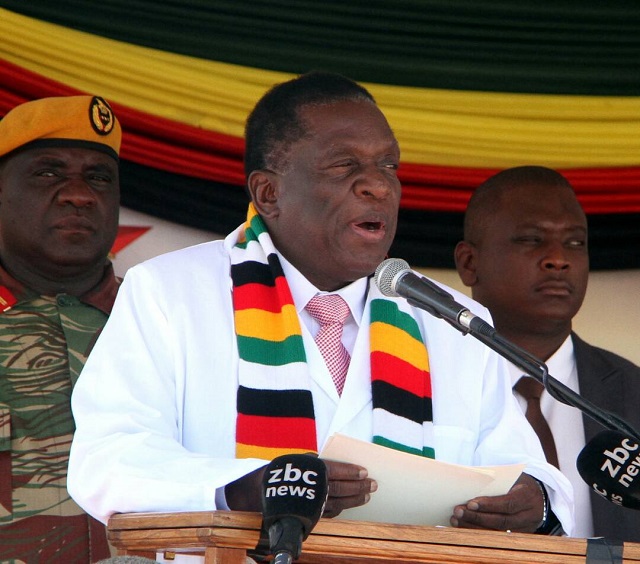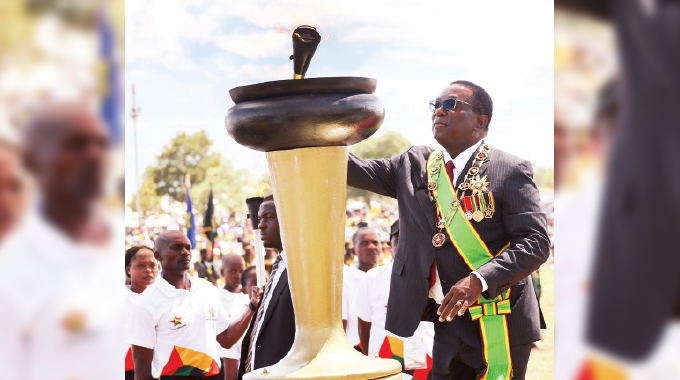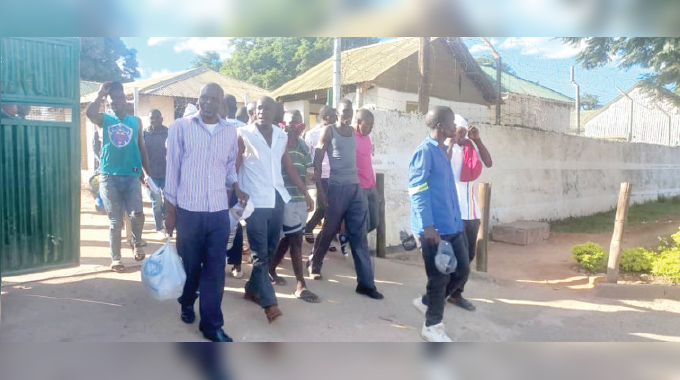MAN AT WORK: ED road construction projects up by 200 percent

Lawson Mabhena Assistant News Editor
Treasury-funded road construction projects have gone up this year by over 200 percent when compared to the previous political administration and at least 50 percent when compared to the Rhodesian administration, The Herald can reveal.
President Mnangagwa’s administration’s record-breaking road construction and rehabilitation programme is literally laying the ground for massive economic investment following the signing of mega deals worth over US$20 billion.
As part of its “deliverables” under the party’s election manifesto, Zanu-PF promises to “rehabilitate all roads in towns and major cities to world class standards. Rehabilitate (the) rail network system, including around industrial areas.”
The party also outlines its plan to re-route all roads in major towns in conformity with a new national transport set-up and rehabilitate ancillary transport infrastructure including road signs, traffic lights, street lighting, stormwater drainage systems including creating and maintaining servitude lanes/areas as necessary.
High grade asphalt concrete roads are being constructed to facilitate the movement of goods on major highways while the National Railways of Zimbabwe’s recapitalisation and rehabilitation of the rail road network will reduce the load on the country’s roads.
On one of the major road projects – the Harare-Mutare dualisation – the first 11km stretch from Msasa to Melfort will be commissioned this week after facing false starts since 2012.
The release of over $100 million by Treasury and $54 million by the Zimbabwe National Roads Administration (Zinara) has seen the reconstruction or resealing of 504km of surfaced roads, with 1 100km of surfaced roads being premix pothole patched between January to June alone, compared to last years’ total of 721km and 7 501km respectively.
Also, between January and June, 18 600km of rural gravel roads were graded, 914km gravel roads were regravelled, 40 damaged bridges were repaired while 317 new culverts were constructed.
The road projects being spearheaded by the Department of Roads have created thousands of jobs in the country’s 10 provinces while electricity lines, data cables and water pipes have been relocated to make way for “wide mat” roads, with farmers along major highways being compensated for developments that have had to be destroyed.
During a recent media tour of treasury-funded road projects, Mashonaland East provincial road engineer Jaravani Kangara, who is also the Harare-Mutare dual road project manager, said the province’s 50km of new road construction this year is a huge jump from last year’s 15km and Rhodesian average of between 20-25km.
“This is unprecedented. I can safely say ‘yes’, it is because of the new dispensation. I have 10 years as a provin-cial roads engineer and I have never received this much money from Treasury. We have people who have been working in the Department of Roads since Rhodesia and they have not done this much road construction in a year,” Eng Kangara said.
He explained that the cost of the roads varied between $500 000 per kilometer to $1,2 million per kilometer depending on the quality and additional costs.
“The first 11km of the Harare-Mutare dualisation project will be open to the public by Friday. The first 11km includes a bridge. This is a Treasury and Zinara-funded project. Other projects that we are doing include the turning of the Marondera-Wedza into a wide mat from a strip road. Funds for the first 10km, $5 million, were released. Funds were also released for 10km of the Beatrice-Mubaira Road ($10 million), 7km of the Wedza Growth Point to Sadza Growth ($3,5 million), 3,3km of the Mt St Mary’s to Nhekairo Chingondo ($1 million).
“We also have the Marondera-Wedza Road which links Murambinda and Harare. It’s the shortest route from Harare to Murambinda and Harare to Buhera. We are doing 10km at a cost of $5 million.
“We have regional, primary, secondary and tertiary roads and obviously the cost varies. The higher the volume of traffic, the higher the class of the road and the higher the cost. For example, the Harare-Mutare Road is a high class road and the cost also includes relocation of electricity cables and compensating farmers,” Eng Kangara said.
“Asking why a top spec road is more expensive is like asking why a Mercedes-Benz is more expensive than a Foton. The higher class roads come at a cost but Zimbabweans deserve them.”
Manicaland provincial roads engineer Arnold Mutungwazi said the Department of Roads was moving at a spectacular pace after completing the first phase of the Ngundu-Tanganda (30km) in two months, with a tender having been flighted for the second phase of 54km.
The province will also cover 20km of the 105km Murambinda-Birchenough Bridge Road. Other roads include Nyanga-Runyangwe, Odzi-Marange, Rusape-Nyanga, Pungwe-Scenic and the reconstruction of the road from Chipinge up to the border.
“Funding went up to $30m this year from last year’s $5 million,” Eng Mutungwazi said.










Comments